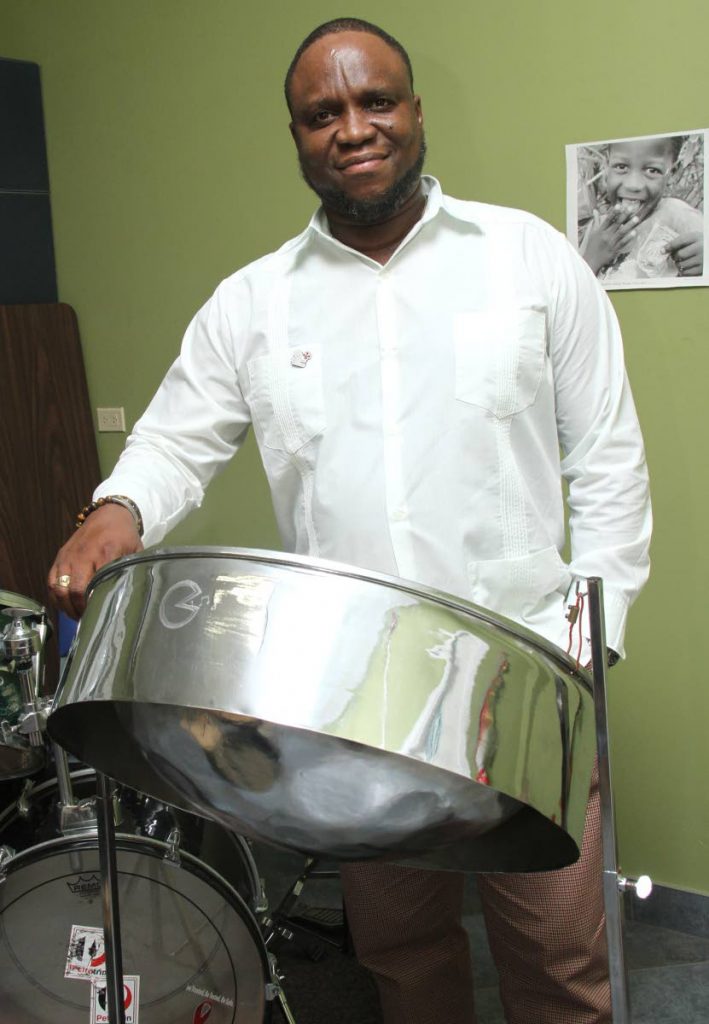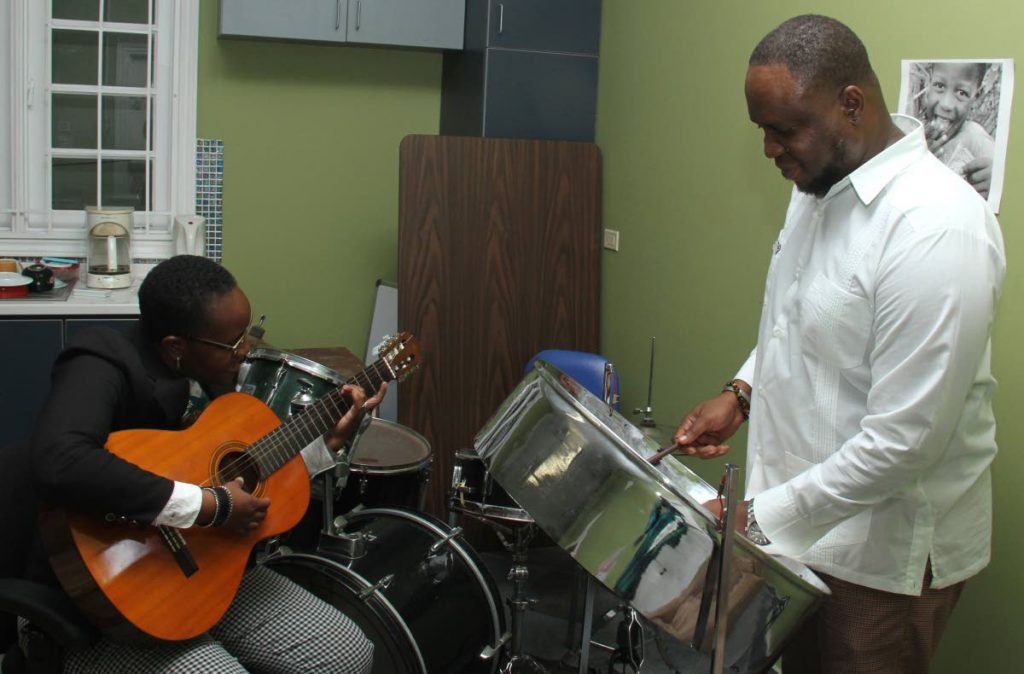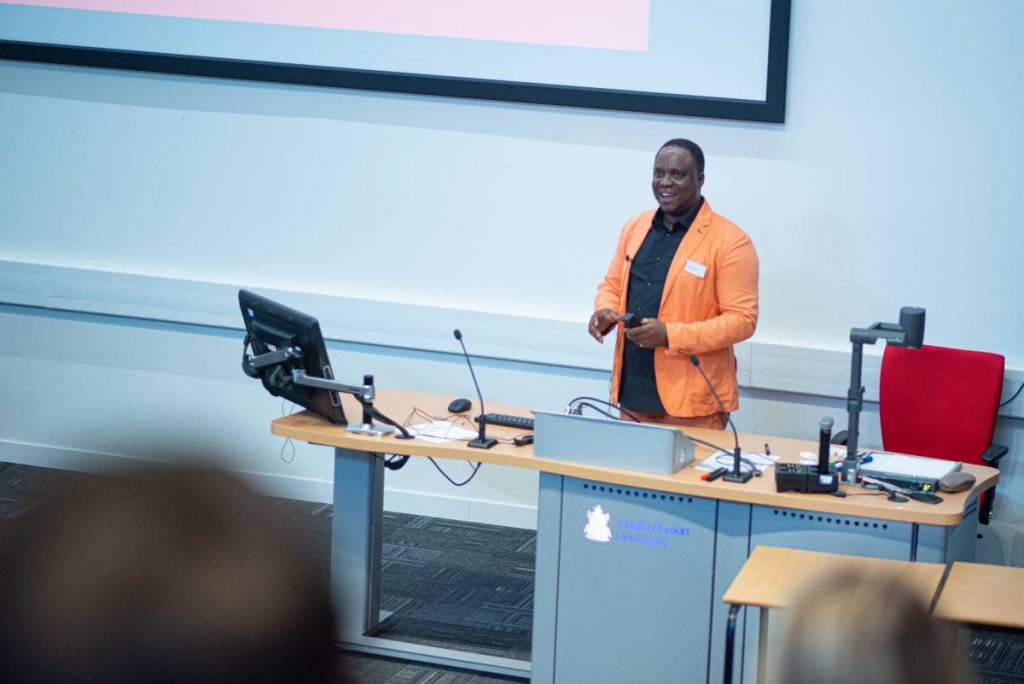Healing through pan

Jamal Glynn, 49, is very aware of the power of music. His awareness was fostered at an early age in a home full of music – whether it was his mother, Allyson Phillip, singing while doing household chores or seeing the examples of his uncles, Wainwright Phillip and Michael "Mossa" Phillip who sang in church and was involved in the steelband movement in the 1960s, respectively.
Glynn, of Morvant, has played pan for more than 30 years. He's also found a unique career path as a musician by becoming a certified music therapist.
A former member of the National Steel Orchestra, he has worked with the North West Regional Health Authority (NWRHA) at St Ann’s Hospital for the past eight years as a music therapist after doing a master’s degree at Anglia Ruskin University, UK.
The NWRHA offers music therapy to both inpatient and outpatient clients weekly at St Ann’s Psychiatric Hospital, Chaguanas Psychiatric Clinic, the Child Guidance Clinic and Barataria Mental Health and Wellness Centre.
Glynn has incorporated the use of the pan in his practice.
Music therapy is defined as “an established psychological clinical intervention, which is delivered by registered music therapists to help people whose lives have been affected by injury, illness or disability through supporting their psychological, emotional, cognitive, physical, communicative and social needs,” according to the British Association for Music Therapy.
The association’s website also said music therapists “draw upon the innate qualities of music to support people of all ages and abilities and at all stages of life; from helping newborn babies develop healthy bonds with their parents, to offering vital, sensitive and compassionate palliative care at the end of life.” The NWRHA's music therapy service supports schizophrenic clients as well as people diagnosed with personality disorders, depression, Alzheimer's and/or dementia.
In Glynn’s years of playing pan he saw its power: "There was some sort of solace, there was some sort of solidity, some sort of value of instrument untapped, not written about, and I was thinking that this would be a good avenue to explore.”

- Ayanna Kinsale
Glynn found many of his contemporaries wanted to be arrangers or top pan players, and he “felt maybe if I go a different direction, that would be useful.”
He came across music therapy at the University of the West Indies (UWI) while doing a degree in musical arts. At the time, he misunderstood what music therapy was about. He thought it was teaching or listening.
“I did not know music therapy was that non-verbal communication which fosters a positive therapeutic relationship from week to week.”
But he understood that music and the pan did something to people when they played it. In a session with Glynn, I found playing the pan in a sort of free-flowing arrangement was liberating. After a hard day at work, it was extremely relaxing to beat a tune on the pan while Glynn responded with the guitar. Having no formal training in music other than playing the guitar pan in my youth and my weekly karaoke sessions, playing music with no end in sight gave a limitless, carefree feeling that was greatly needed.
Though Glynn says music therapy is not a quick cure for anything, it's not hard to see why he feels using pan provides an affordable form of therapy for people in TT and even the region.

In his practice, Glynn sees people from five to 75. He said because many Trinidadians have a connection to the pan, through having heard it while growing up, having a family member who plays, or being exposed in school.
Glynn sees music therapy as an add-on to standard care. He was encouraged by his instructors while at Anglia Ruskin University, to use the pan as a tool in music therapy.
Currently the only music therapist in the public sector, he sees up to five clients per day in sessions lasting 30-50 minutes, depending on the client's age.
The sessions are client-led: each client is presented with several instruments and must choose one. Glynn then offers harmonic or melodic support as they play.
“To be a music therapist, you have to be a really good musician,” he said.
In the sessions, he and his clients do free improvisations. where a start and an ending is negotiated. Clients can also use the keyboard, drums and guitar.
Glynn hopes music therapy can become a part of the early lives of children through schools and other spaces, so that “they can grow up experiencing a better quality of life.”
.


Comments
"Healing through pan"